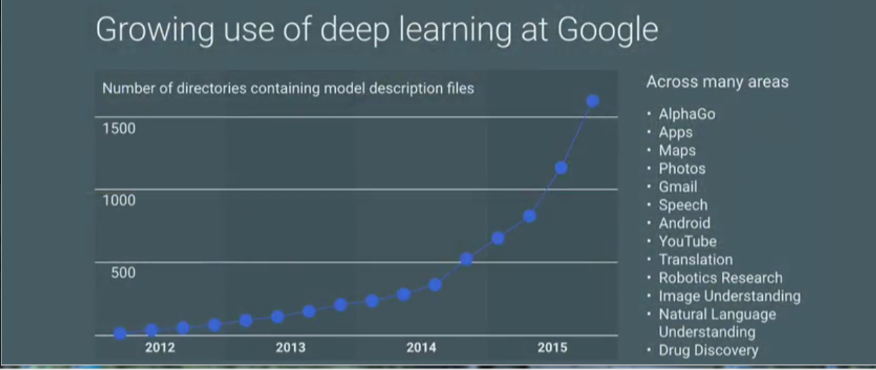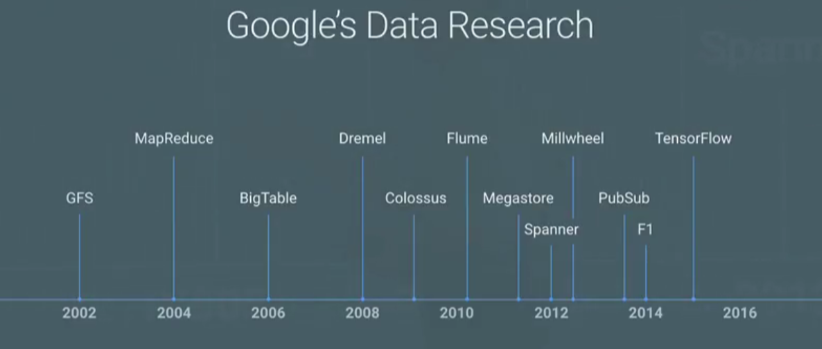
At the dawn of the cloud computing revolution, the winners were determined in their ability to rule with an “iron” fist (the hardware) but over the next ten years, we will see that having an iron-fist basis for rule is far easier than ruling with nuanced, multi-layered intelligence–and it takes a special kind of leader to do that.
It takes a leader with boots on the ground for data collection, one who can deploy innumerable ears around every corner, ever-watching eyes that are tuned to the whole of citizenry, listening without discretion, silently but busily meshing all of that information into a consciousness of sorts–a collective knowledge base that can be combed, smoothed, and rolled out to appease different divisions in that land. While indeed this is a bit of dramatization for effect, this is exactly the kind of game of thrones that is happening just now among the giants of cloud. The iron throne is less a symbol than it used to be, the new seat of power is softer, changes position with the times, but always offers a 360 degree view.
In short, winter is coming for some of the most seasoned of the old guard.
Ten years ago, Amazon Web Services was differentiated in the fact that it had no real competitors that were able to tap into the economies of scale that continue to make that business what it is today. Through partnerships, hard work to roll out in-depth use cases from top companies, and consistent improvements to the infrastructure, security, and code base, AWS grew to become the behemoth it is today, while others, including Microsoft, IBM, Rackspace, and more followed behind, carving out markets where AWS left off and maintaining them through ever-slimmer price, technology, and code wars.
One can make the argument now, however, that the next platform for emerging cloud applications is rooted in far more than the infrastructure base that propelled those public cloud efforts. The stack itself is shifting and while many businesses will continue to scale their applications on AWS, Azure, and elsewhere, a new code and cultural base is firming up around machine learning. And despite what we are covering in these early stages of its growth and potential in enterprise, it goes far beyond more consumer-geared services like voice recognition for mobile apps or facial recognition to allow fast classification of an individual’s photo library. Machine learning is, in fact, the next platform.
Herein is what separates the first big wave of Infrastructure as a Service successes—the last decade (and first real decade) of cloud computing from what is next. Over the next decade, the infrastructure will continue to be the “easy” part and the real defining factors of success will be the ability to capture, train, and model data for users and from users using machine learning.
Google Says Machine Learning is The Next Platform
At the NEXT 2016 conference, Google’s Eric Schmidt touched on one of the biggest advantages Google has in that next decade of cloud ahead. It’s not infrastructure or software—and it’s not even as simple as pure “data” to work with. It’s the crowdsourced intelligence—an evolving, streaming pool of it—to create smarter systems from the top down that users at all levels can tap into, retrain, alter, and output for their own purposes. It is the next evolution of cloud.
This concept of crowdsourcing data that can lead to better, smarter, wider-scale training is at the heart of Google’s competitive advantage for the next decade of cloud, Schmidt says. “I’m convinced that a rapid evaluation model, Google Cloud Platform, machine learning, and crowdsourcing will be the basis of every big IPO win in the next five years.” This will be an evolution similar to the arrival of apps—putting exactly what is required in front of the user with intelligence built in and with the infrastructure hidden behind so many layers of abstraction that the experience is seamless. As Schmidt compares, this is much like the evolution of the automobile industry—from the early days, to the clutch, to the self-driving car of the future.
“Google Cloud Platform is timed perfectly for what’s going to happen next. This platform is not the end, it’s the bottom layer—there’s something above it. That thing is machine learning, both narrow AI and general AI. It’s the next transformation. The programming paradigm changes. Instead of programming a computer, you teach a computer to learn something and it does what you want. This is a fundamental change for programming.”
Schmidt says the best way to prepare for this transform is to start building on top of Linux, Google Cloud Platform, and Kubernetes. On the development side, to work with modern, scalable, portable languages like Go, Python, node.js, java, and build in the Google App Engine. But at the top of this list, he says, it’s a matter of getting comfortable with TensorFlow, which will be at the heart of Google’s (and many other enterprises, in his estimation) machine learning and analytical strategies over the next five years.
With the rollout of the company’s new machine learning platform its own cloud, there is a flag in the sand planted that should set AWS, Microsoft with its Azure offering, and of course, companies with advanced machine learning and the cloudy infrastructure to host on like IBM, scrambling. This is, as noted earlier, because unlike those other companies, Google has the crowdsourcing services (not to mention appeal) through its many photo, voice, and text-based services that the others do not. And it is harnessing this crowdsourcing to power new services like those listed here.

Armed with TensorFlow to allow sophisticated deep learning as a fully managed service, the next decade of cloud could be very different, indeed—not to mention the next generation of analytics. We’ve moved from the era of figuring out what to do with so much data using variations on the same old tools (and some new frameworks like MapReduce and Hadoop) to taking a quantum leap ahead by letting that data figure itself out, at least in theory. And that is a big deal—one that could threaten the current cloud hegemony, which does not have the full-stack focus and crowdsource-able services that mighty Google has.

Not long ago, as we remarked here on the end of the first decade of AWS, even if it was in the context of very-large scale applications, the focus was on the evolution of the infrastructure and the related tools and services that hooked into it. That was a fitting look back since the cloud’s first decade was strongly rooted in these “base” concerns of security, networking, and of course, the iron required to power an exploding range of user applications. There is little doubt that AWS pioneered the cloud as we know it, with additional elements being thrown in by other companies who lacked the same initial incentive to begin renting out spare infrastructure (versus building datacenters simply for hosting cloud-based services).
With all due respect to that effort—and what lies ahead for AWS and its companions in the cloud space, armed with crowdsourced data and the machine learning and deep learning frameworks to do something profoundly useful with it, bolstering new and existing services, Google is set to give the cloud camps a fast dash for their money. This could very well be the year that Google’s cloud finds its footing in a way it hasn’t before with large-scale enterprise, who took their first tenuous steps to the public cloud (often via hybrid models) with Amazon and will take some convincing to be wrenched free after all the initial fear, cost, risk, and cultural changes that came with the shift away from purely on-prem infrastructure.
What will get companies to take another look at their cloud options is no longer the hardware. It is roughly equivalent—and one can expect Google to take further efforts to bolster its range of “instances” as AWS did once it realized that capturing certain markets meant a diversity of memory, acceleration, CPU, and networking options. What will make them look again is the one area of differentiation that is very hard for most companies to create or emulate—the next generation of smart analytical capabilities. Capabilities that are so smart, tuned, and aware that the oversight required, outside of the beginning effort, will be game-changing, at least in Google’s view.


Elegant writing Nicole–well done.